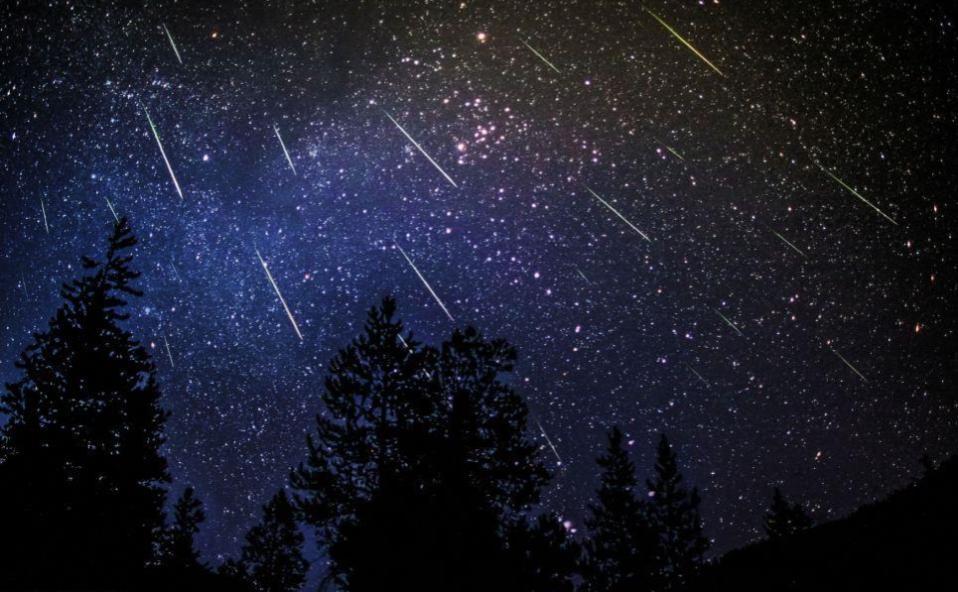Arguably the best meteor shower of the year occurs each August when the Perseid Meteor Shower peaks. Named because these meteors seem to radiate from the center of the constellation Perseus, the Perseids peak this year on the morning of August 13th. We should look to the northeast skies between 1 and 4 am, when Perseus has risen nearly two-thirds of the way to the zenith (the top of the sky).
Unfortunately this year, the nearly Full Moon, which does not set until 4 am in the southwest sky, will hinder the number of meteors we will be able to see; which under dark, moonless skies approaches 100 per hour.
To increase seeing more meteors we should look on August 11th and 12th, because the Moon is less Full and sets earlier, or find your darkest site and put yourself in a place where a building or house is to your back to block the Moon. The Moon will be low in the southwest and we will be facing northeast to look for meteors. We should still be able to spot 20 or more fast moving meteors per hour.
After sunset Jupiter will draw our attention looking south It will be close to the reddish star Antares, the brightest star in Scorpius. Even though Antares is one of the skies top 10 brightest stars, Jupiter will outshine by 20 times! Binocular’s reveal Jupiter’s disk and its 4 brightest Moons, and telescopes allow us to see its 4 brightest Moons and the colored cloud bands of its upper atmosphere. Look for the gibbous Moon just above Jupiter on the night of August 9th.
Some 30 degrees east(left) of Jupiter we will see Saturn at its best for 2019, but not nearly as bright as Jupiter, because it is twice as far away from Earth. Saturn is brighter than any of the stars of Sagittarius that surround it now. Telescopes will reveal its wonderful rings, its moons, and its own colored cloud bands.
Mercury makes a brief appearance in our morning skies before dawn in the East. Forty-five minutes before sunrise, Mercury will appear 8 to 10 degrees (about the height of a clenched fist held at arm’s length against the sky) on the morning of August 9th. Mercury will be just below Gemini’s 2 brightest stars, Castor and Pollux then —– but will outshine both. Mercury will stay in about the same place for about a week and brighten slightly, before its orbit makes it appear to descend toward the Sun and disappear after the 17th.
Both Mars and Venus are invisible this month; they are both to close to the Sun. But both return for sky-watchers to see in October. Venus will be seen then at dusk in the west; and Mars will be found in the east before dawn.



Write a Letter to the Editor on this Article
We encourage readers to offer their point of view on this article by submitting the following form. Editing is sometimes necessary and is done at the discretion of the editorial staff.